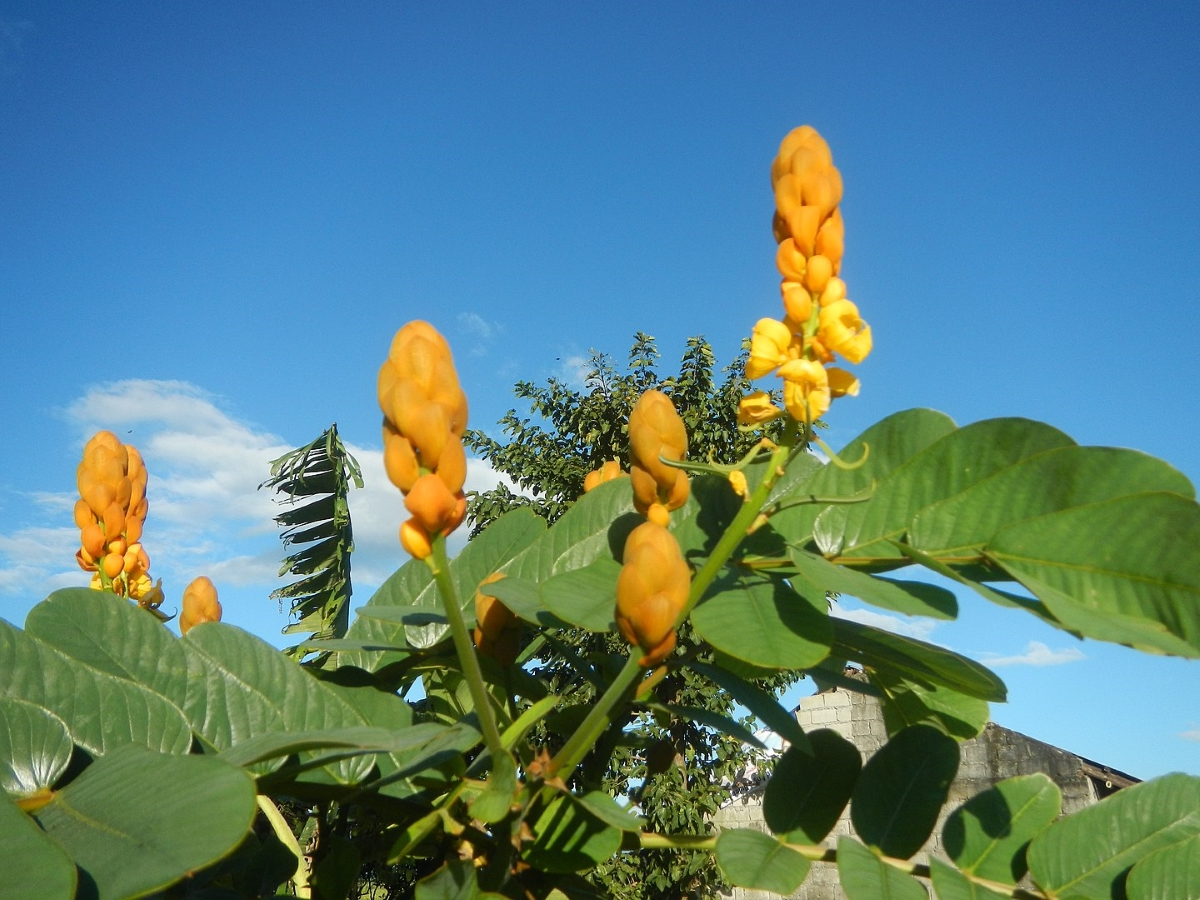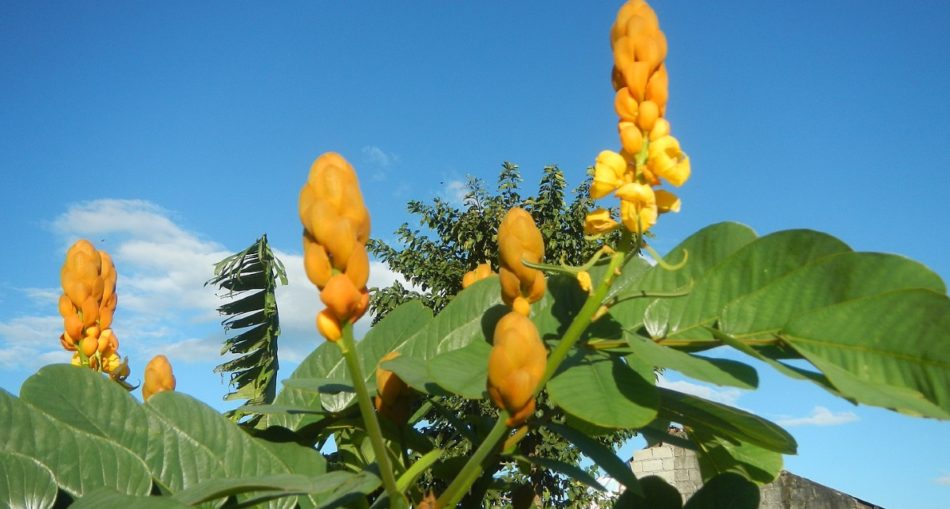Locally known as the Carrion Crow Bush, this shrub is best distinguished by its brights inflorescences, which are shaped like candles. In Guyana, the plants are typically found growing wild. In the rural areas of Guyana, the flowers are harvested, boiled and their extract is drunk as a laxative.
The scientific name of this shrub is Senna Alata which is used interchangeably with Cassia Alata. Locally, the plant is called Carrion Crow Bush but the plant is known by several other names, most of which refer to the candle-like shape of its fluorescence. These include emperor’s candlesticks, empress candle plant, candle-tree, candle or candelabra bush, Christmas candles, and even ringworm shrub.

By Judgefloro – Own work, CC0, https://commons.wikimedia.org/w/index.php?curid=53154888
Origin of Senna Alata
Senna Alata is native to most countries in South American like Colombia, Brazil, Venezuela, Guyana and French Guiana. It also grows in several countries like Southeast Asia, North Australia where it is highly valuable because of its medicinal and ornamental properties. In Africa, the shrub has become naturalized and is considered a weed.
Scientific Classification of Senna Alata
- Kingdom: Plantae
- Clade: Tracheophytes
- Clade: Angiosperms
- Clade: Eudicots
- Clade: Rosids
- Order: Fabales
- Family: Fabaceae
- Genus: Senna
- Species: S. alata
Description of Senna Alata
Senna Alata shrubs are typically three to four (3–4) metres in height with thick, green branches. The leaves are green and about thirty to sixty (30-60) cm with relatively short leaflets. These leaflets grow pairs in of six to twelve pairs (6-12), and are leathery, oblong, with rounded edges. In the dark, the leaves are known to close or curl. The inflorescence of the plant resembles a yellow candle also the reason for one of its common names. These flowers are about two and a half (2.5) cm round and have orangish-yellow unequal sepals. However, the petals are a bright, attractive yellow colour. The fruits are basically a straight pod about twenty-five (25) cm long. each containing about fifty (50) flat, triangular seeds. On either side of the pod, there is a ‘wing’ running lengthwise on the pod. These dark brown, almost black seeds are dispersed by animals and water.
Uses of Senna Alata
- The fungicidal properties of the plant are effective in treating ringworm and other fungal infections of the skin. Green-coloured cotton wool is typically produced from the leaves which are then ground in a mortar, combined with oil and applied to the area.
- Saponin in Senna Alata is used to get rid of intestinal parasites and as a laxative.
- This plant is used to treat a wide variety of illnesses including asthma, bronchitis, dysentery, fever, skin disorders, jaundice, and malaria.
- It is also used in the treatment of high blood pressure, stomach problems, snake bites, psoriasis, malaria, convulsions, and headache.
- In the Philippines, Senna Alata is a medicinal plant and its extracts are a common ingredient in products like soaps, shampoos and lotions.
- It is also an ingredient in traditional medicine in Sri Lanka.
- Senna Alata is used in some cases as an alternative to coffee and eaten in small quantities as a vegetable. In addition, a gum may also be obtained from the plant.
- The plant is also used in the tanning of leather and even in tattooing.
- Decoctions of the Senna Alata leaves are used as a mouthwash in India.
Interesting Tip
- Senna Alata is exported from India to Japan.
About Senna Alata
Senna Alata or the Carrion Crow Bush as Guyanese call it, is a medicinal plant used to treat many illnesses including ringworm and constipation. It is considered a local laxative in Guyana but is less common than the Senna Pod. While this shrub grows wild in Guyana, in many other countries it is considered a beautiful ornamental plant, prized for its yellow candlelike flowers.
Article References:
- https://www.cabi.org/isc/datasheet/117090#todescription
- https://en.wikipedia.org/wiki/Senna_alata
- https://toptropicals.com/catalog/uid/SENNA_ALATA.htm







